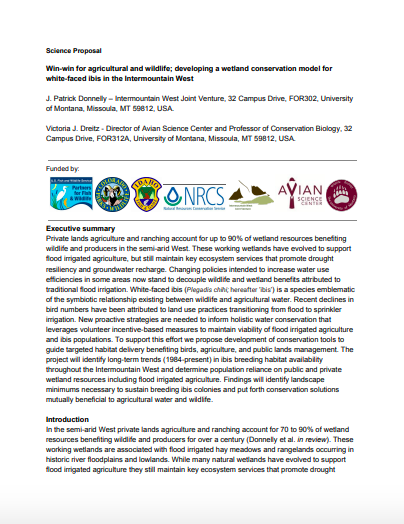 Private lands agriculture and ranching account for up to 90% of wetland resources benefiting wildlife and producers in the semi-arid West. These working wetlands have evolved to support flood irrigated agriculture, but still maintain key ecosystem services that promote drought resiliency and groundwater recharge. Changing policies intended to increase water use
Private lands agriculture and ranching account for up to 90% of wetland resources benefiting wildlife and producers in the semi-arid West. These working wetlands have evolved to support flood irrigated agriculture, but still maintain key ecosystem services that promote drought resiliency and groundwater recharge. Changing policies intended to increase water use
efficiencies in some areas now stand to decouple wildlife and wetland benefits attributed to traditional flood irrigation. White-faced ibis (Plegadis chihi; hereafter ‘ibis’) is a species emblematic of the symbiotic relationship existing between wildlife and agricultural water. Recent declines in bird numbers have been attributed to land use practices transitioning from flood to sprinkler irrigation. New proactive strategies are needed to inform holistic water conservation that leverages volunteer incentive-based measures to maintain viability of flood irrigated agriculture and ibis populations. To support this effort we propose development of conservation tools to guide targeted habitat delivery benefiting birds, agriculture, and public lands management. The project will identify long-term trends (1984-present) in ibis breeding habitat availability throughout the Intermountain West and determine population reliance on public and private wetland resources including flood irrigated agriculture. Findings will identify landscape minimums necessary to sustain breeding ibis colonies and put forth conservation solutions mutually beneficial to agricultural water and wildlife.

